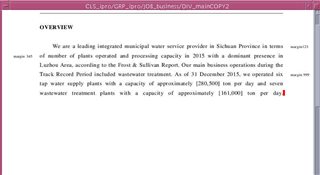Currently "!flag" is used in the Xymacro to set the left margin note or the right margin note. Because of the limitation, when the left margin note <ufm1> margin888 <ufn> and right margin note <ufm> margin999 <ufn> are be set in the same line,
The information Mark provided should take care of the use case. Unless there is a more significant business value, we do not plan to do anything further.
